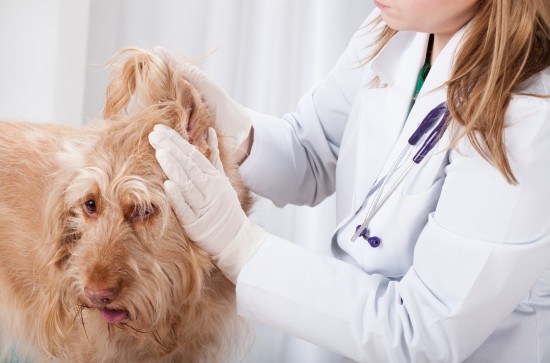
If you own a male dog for a pet, something you should be aware of is that he can develop prostate cancer, just as a human male can. A tumor or growth in the prostate is the reason behind most prostate gland issues in male dogs. There are signs and symptoms that will help alert you to the fact that your dog may have prostate cancer.
1024x768 Normal 0 false false false /* Style Definitions */ table.MsoNormalTable {mso-style-name:"Table Normal"; mso-tstyle-rowband-size:0; mso-tstyle-colband-size:0; mso-style-noshow:yes; mso-style-parent:""; mso-padding-alt:0cm 5.4pt 0cm 5.4pt; mso-para-margin:0cm; mso-para-margin-bottom:.0001pt; mso-pagination:widow-orphan; font-size:10.0pt; font-family:"Times New Roman"; mso-ansi-language:#0400; mso-fareast-language:#0400; mso-bidi-language:#0400;}燳ou need to schedule an immediate visit to your veterinarian, when you notice the following:
牱牋牋牋牋 Your dog has a fever and displays a lack of appetite.
窢牋牋牋? His urine shows a pink color and may also contain blood.
窢牋牋牋? He抣l typically pass urine with short spurts intermittently.
窢牋牋牋? You抣l notice stiff back legs in your dog and he may take shorter steps.
窢牋牋牋? Your dog may have an arched back when he walks.
?/p>
Other facts that you need to know about dog prostate cancer include:
?/p>
窢牋牋牋? If you notice the above symptoms in your dog, he most likely has a tumor in his prostate, as it抯 highly improbable that any other condition will cause the same symptoms.
窢牋牋牋? The prostate gland is located within the urethra. It抯 a small, rather spherical gland that produces fluids that carries and feeds the sperm during the mating process of dogs.
窢牋牋牋? If your dog develops a tumor in his prostate, it will cause inflammation of the gland. As growth continues, it will push against the urethra抯 wall, making it difficult and very painful for your dog to urinate.
?/p>
The most important thing that you can do once you start to notice any of these things with your dog is to get him to the veterinarian immediately. Once there, the vet will perform X-rays, ultrasound scans, and may use a camera to view your dog抯 prostate. These are done to confirm whether or not your dog has prostate cancer.
?/p>
If tests confirm the presence of a tumor, it must be removed surgically. It can be problematic if the cancer has spread to other parts of the dog抯 body, or if the tumor has grown too close to vital organs. Most vets will still attempt to remove the growth and follow it with chemotherapy and radiation. Samples will be submitted to a histopathologist to decide treatment.
?/p>
?/p>
 Pekingese Home Alone
This story began some 12 years ago, while my female Pek
Pekingese Home Alone
This story began some 12 years ago, while my female Pek
 Keeping British Birds
Keeping British B
Keeping British Birds
Keeping British B
 7 Tips To Help Dogs With Ear Problems
7 Tips To Help Do
7 Tips To Help Dogs With Ear Problems
7 Tips To Help Do
 The Birth Of A Breed - How Do New Dog Breeds Gain Official Recognition?
The Birth Of A Br
The Birth Of A Breed - How Do New Dog Breeds Gain Official Recognition?
The Birth Of A Br
 The Phenomenon Of Dyed Fish, And How To Avoid It
The Phenomenon Of
The Phenomenon Of Dyed Fish, And How To Avoid It
The Phenomenon Of
Copyright © 2005-2016 Pet Information All Rights Reserved
Contact us: www162date@outlook.com